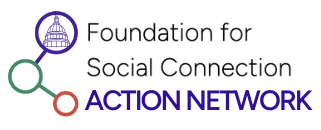In March 2020, myself and thousands of other college students were told we were receiving an extra two weeks off during our spring break. While I knew the additional time off was because of a disease called ‘coronavirus,’ I didn’t think it would impact my life too much. Little did I know that a pandemic would ensue and that my life would change forever.
University students across the globe are now caught in a new normal. I’m one of them – struggling to maintain a robust social network and a healthy lifestyle. Pre-pandemic I would go to the movies with my friends, or take a workout class with my sorority sisters as a way to connect throughout the week. Unfortunately, Covid-19 has made it harder to engage in some of my favorite social activities. Ultimately, my typical pathways for social connection are somewhat limited. The past two years have made it clear just how much my social health directly impacts my physical, mental, and emotional wellbeing.
But is it just me? Am I alone in feeling…alone?
Due to my personal experience, I wanted to gauge feelings of social isolation and loneliness at different universities. After conducting a brief survey across my personal network, I was surprised to see that every respondent indicated that they had experienced social isolation or loneliness while at university. And almost all individuals indicated that their experience had been triggered by online school and the Covid-19 pandemic.
Many students acknowledged the severity of social isolation and loneliness, one sharing: “I feel like loneliness is a silent killer and needs serious addressing especially amongst the youth. Coping strategies and mental health awareness are crucial.”
When asked about access to SIL interventions on campus one student, Kaile Prosser, specifically noted how, “I don’t even know what they did, so no? The outreach should’ve been enough so that every student had some sort of idea of paths they could have taken during the times they were struggling.”
These college students didn’t feel supported by their schools, and were unaware of solutions available to them. Statistics show that students across the country felt similarly. Additionally, a survey taken in 2020 reported that two-thirds of college students struggle with loneliness and feeling isolated. This striking statistic largely reflects the toll of the pandemic and highlights the potential negative risks of necessary prevention measures, such as social distancing.
But college students aren’t alone in feeling alone either. Social Isolation and Loneliness (SIL) prevalence is disproportionately high in all youth populations. In 2020 it was reported that younger populations feel 85% lonelier than adults 50 and over and 20-48% of adolescents reported severe levels of loneliness.
Youth mental health is heavily impacted by SIL. Social isolation in youth is a high-risk factor for psychological illnesses as well as suicidal ideation. During the first year of the pandemic 1 in 4 youth globally were experiencing clinically elevated depression symptoms. The increase in depression symptoms can be linked to extended periods of social isolation. As social isolation is a factor for different morbidities within youth populations, it is necessary that interventions are readily available.
While a year or two ago I thought I was unique in feeling alone, it’s clear to me that many of my classmates continue to feel the same. Yes, Covid-19 exacerbated social isolation and loneliness, but there has been an SIL epidemic impacting American youth at disproportionate rates for years. Young people are seeking authentic social connection. With schools, universities, and companies shifting to remote settings, it is even more pressing that resources and evidence-based interventions are available. We must acknowledge and address the public health implications of social isolation and loneliness among youth and develop a nationally coordinated response in order to shape the health and well-being of future generations.

